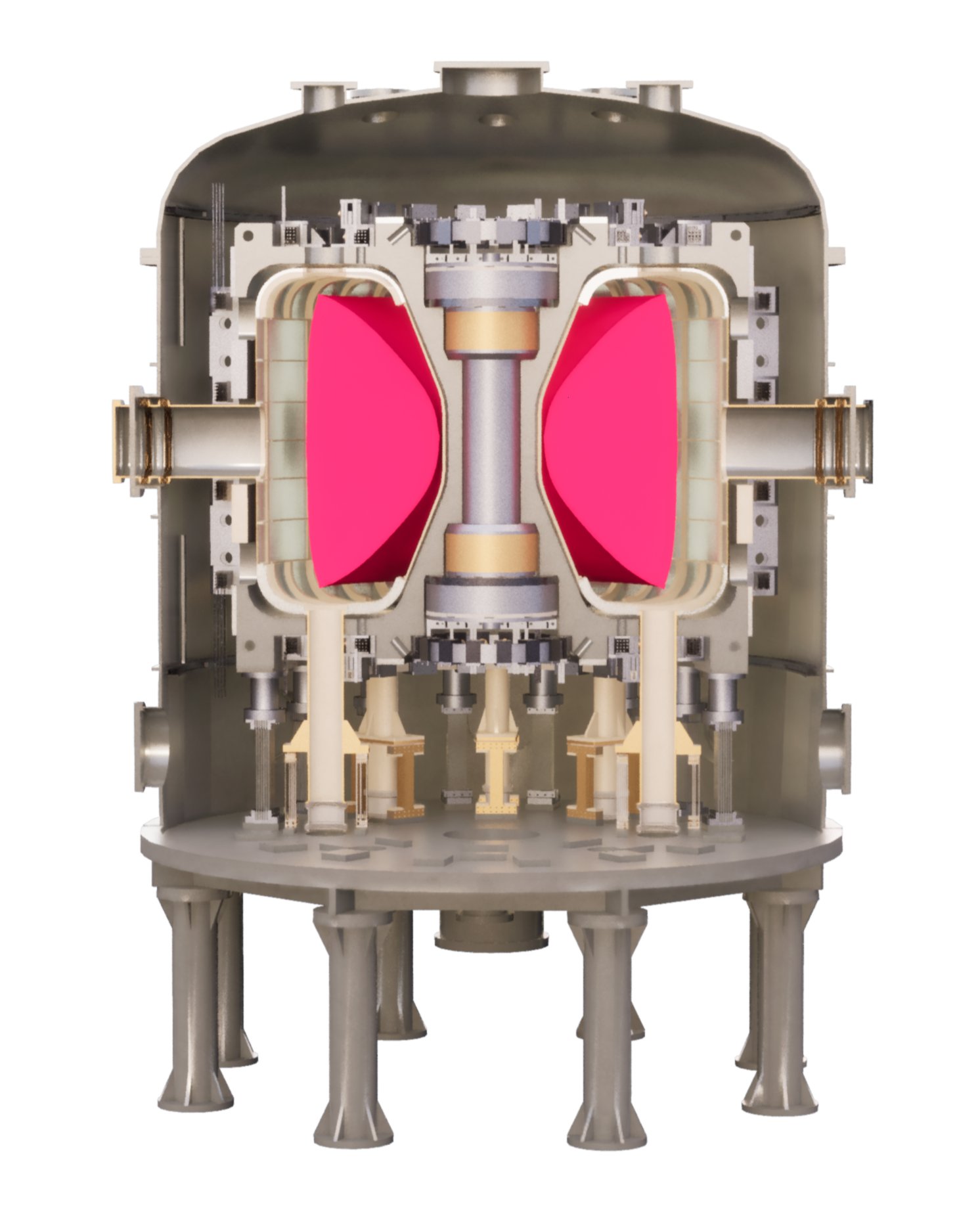


 Chronology of SUNIST
Chronology of SUNIST
 November 4, 2002: Achievement of the first
plasma
with a plasma current of 40 kA and a 0.06 T magnetic field
November 4, 2002: Achievement of the first
plasma
with a plasma current of 40 kA and a 0.06 T magnetic field 2003 to 2007: Physical studies (boundary
plasma,
turbulence, startup by electron cyclotron waves)
2003 to 2007: Physical studies (boundary
plasma,
turbulence, startup by electron cyclotron waves) 2008: Device dismantlement, renovation of
the
vessel
chamber, and reassembly
2008: Device dismantlement, renovation of
the
vessel
chamber, and reassembly 2009 to 2019: Continuous upgrade of the
magnetic
field power supply and the controlling system, enriched plasma diagnostics, and research
into
magnetohydrodynamic instabilities, three-dimensional eddy currents and their influence,
Alfvén
eigenmodes, tearing mode, electron Bernstein wave heating, and other areas.
2009 to 2019: Continuous upgrade of the
magnetic
field power supply and the controlling system, enriched plasma diagnostics, and research
into
magnetohydrodynamic instabilities, three-dimensional eddy currents and their influence,
Alfvén
eigenmodes, tearing mode, electron Bernstein wave heating, and other areas. 2019: A plasma current of 120 kA and a 0.27
T
magnetic field
2019: A plasma current of 120 kA and a 0.27
T
magnetic field 2020 to date: Continuous transformation and
upgrade,
more advanced refueling method, etc.
2020 to date: Continuous transformation and
upgrade,
more advanced refueling method, etc. Main Parameters of SUNIST-2
Main Parameters of SUNIST-2
 Major radius 0.53 m
Major radius 0.53 m Minor radius 0.33 m
Minor radius 0.33 m Toroidal magnetic field 1 T
Toroidal magnetic field 1 T Plasma current 500 kA
Plasma current 500 kA Ion temperature 1.5 keV
Ion temperature 1.5 keV

 NTST Key Parameters
NTST Key Parameters
 Major radius: 0.8 m
Major radius: 0.8 m Minor radius: 0.5 m
Minor radius: 0.5 m Toroidal magnetic field: 1 T
Toroidal magnetic field: 1 T Plasma current: 1 MA
Plasma current: 1 MA Ion temperature: 5 keV
Ion temperature: 5 keV Main Parameters of CTRFR-1
Main Parameters of CTRFR-1
 Major radius 1.0 m
Major radius 1.0 m Minor radius 0.56 m
Minor radius 0.56 m Toroidal magnetic field 3-5 T
Toroidal magnetic field 3-5 T Plasma current 3 MA
Plasma current 3 MA Ion temperature 10 keV
Ion temperature 10 keV


 Main Parameters and Features of CTRFR-2
Main Parameters and Features of CTRFR-2
 Major radius 3.0 m
Major radius 3.0 m Minor radius 1.67 m
Minor radius 1.67 m Toroidal magnetic field 5 T
Toroidal magnetic field 5 T Plasma current 11 MA
Plasma current 11 MA Ion temperature 15 keV
Ion temperature 15 keV Net electric power output
(Pe,net)
100
MW
Net electric power output
(Pe,net)
100
MW Central neutron shield
Central neutron shield Outer neutron moderating and tritium
breeding
blankets and neutron shield
Outer neutron moderating and tritium
breeding
blankets and neutron shield